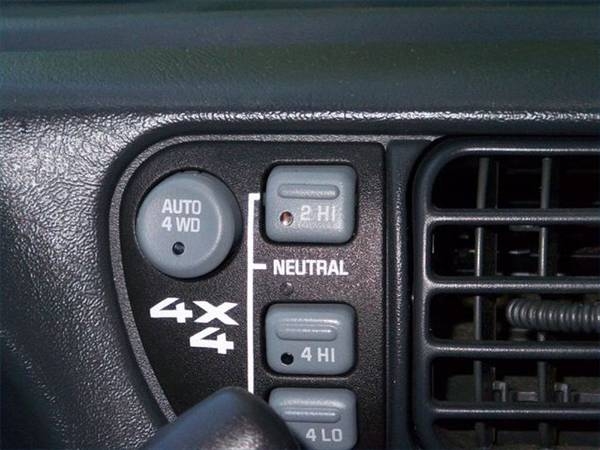
The 1999 Chevrolet Blazer 4WD uses a front independent suspension with rear live axle drive train setup, with a central transfer case mounted to the 4L60E transmission. Troubleshooting this system can be done by the average backyard mechanic in about 30 minutes.
Check the 4WD system's operational functions with the control buttons on the dash panel. Switching between 2WD and 4WD HI will cause the transfer case to make an audible "click" that will be heard from the cab. 4WD LO will require the transmission be shifted to "Neutral," and should make the transfer case click again while setting the gearing to a lower ratio. If any of these operations are non-functional, then the electrical system could be at fault. The fuses and switch should be checked for proper connection; in some cases the transfer case's vacuum switch can be malfunctioning.
Check the fluid level of the transfer case, both differentials, and the transmission for proper level and color. The transmission has a dipstick that can be checked while the truck is running and in the Park position. It should be a red translucent color. The transfer case has a top and bottom flat screw-type plug, and turning the bottom plug in a counter-clockwise direction with a square 10 mm male adapter will provide access to the fluid. Both differentials also have bottom fill plugs, and the fluid can be checked with a finger for proper level as the full "filled" level of oil should just reach the bottom plug. Any low or discolored fluid can cause mechanical malfunctions, and replacing the oil with the correct level and type can decrease problems. Some types of transfer cases used in Blazers use a special blue GM-manufactured fluid while others use normal transmission fluid; the correct fluid type will be listed in the owner's manual.

Check the front constant velocity joints for damage or loss of grease through the rubber "boots" that cover the actual joints. These boots should be free from tears or gaps, and any leaking grease will be obvious when the boot is inspected. There are four CV joints, two for each side of the front differential. Replace the torn boots, or the entire axle if it is damaged or making a popping noise around corners.